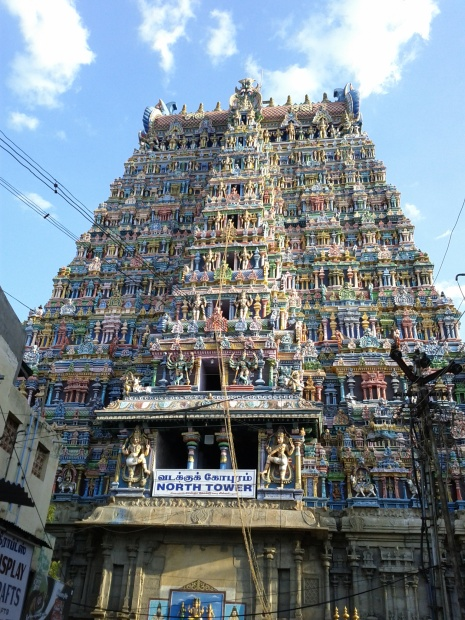In the temple towns of South India the next place of worship is only a stone’s throw away. The imperious spires of elegant churches rise high over traditional markets standing as a proud landmark of Indo-European architecture. Arabian styled mosques with their regal minarets call the faithful to prayer five times a day. But the main attention of the town is usually taken up by the Hindu Kovils that often define the personality of the city. The temple at Rock Fort is a proud symbol of the city of Tiruchchirappalli. Life in Madurai revolves around the Meenakshi Temple. Tanjavur would be incomplete without the Temple of Brihadeeshwar. The remarkable nature of human ingenuity and the hidden power of faith are responsible for creating these historic jewels that have stood the test of time.
They are the guardians of an ancient culture standing as a bulwark against the winds of modernity that are sweeping the world. Their lovingly carved gopurams soar high above the village skyline casting an intimidating presence over the lands they have been sworn to protect. These monuments have spawned stories that have since become legends and subsequently passed into myths. It is these myths that have filled the hearts of the followers with devotion; a devotion that makes them travel from far and wide, braving the sun and the storms, the wind and the rains, so that they may pay obeisance to the presiding deity.
The temples are not only the main attraction; they are also the center of life in small towns. The city market is close by as is the central bus terminus and the main railway station. The temples are the main landmarks of the city with the gopurams acting as signposts for travelers arriving from a great distance. Far in the distance where the state roads branch off from the main highways travelers crane their necks from the windows of their cars, see the gopurams towering in the distance and know that they are close to their goal.
Temple markets are also a main source of commerce for the inhabitants of small towns and villages. Every day thousands of cars turn into the narrow roads that lead to the main gates of the shrine. The vehicles maintain a slow speed thwarted as they are by the swarms of hawkers, bicycles and motorbikes coming in the opposite direction. On one side tea shops are busy boiling kettles of tea and coffee to serve up a steaming brew to tired travellers. On the other side restaurants are busy preparing plates of idlis to satisfy their hungry stomachs. Jostling for space with the men and their machines in these crowded areas are the omnipresent cows; their very presence being a sure fire indicator that one is close to a holy place.
Indian deities like to be pampered and there is a vast assortment of sweets, flowers and garments in the shops next to the temple to fulfil this need. There are few Indian rituals that can be performed without the help of the humble coconut. That is why one finds such large quantities of it in the religious places. With so many merchants and so many hawkers selling the same item, competition is tough and that is why tourists often have to prepare themselves mentally in advance for the fact that they are going to have several sellers crowd around them when they reach the place. There are several stores that sell pictures of the main shrine and pendants with holy inscriptions on them. These pictures are matchless for their beauty and imagination, and one can only wonder at the skill of the artists who created them. Thus, the temples of South India have inspired its citizens to live lives of great discipline and display talent that goes beyond the ordinary.
__END__

